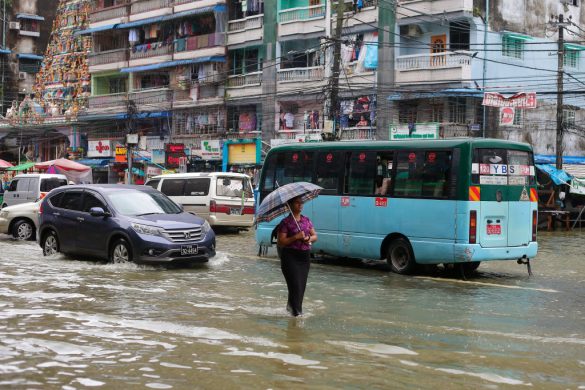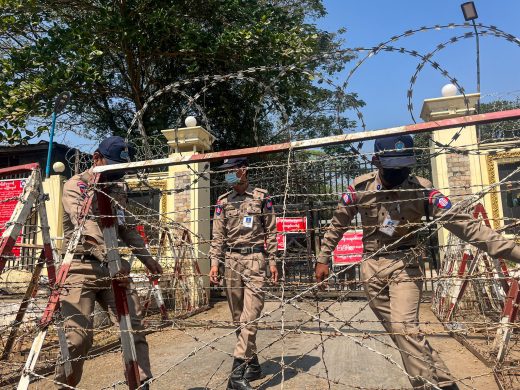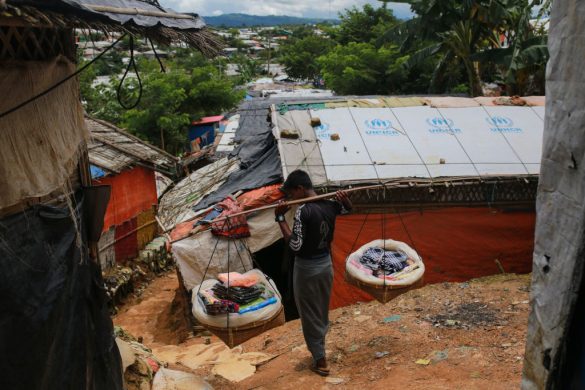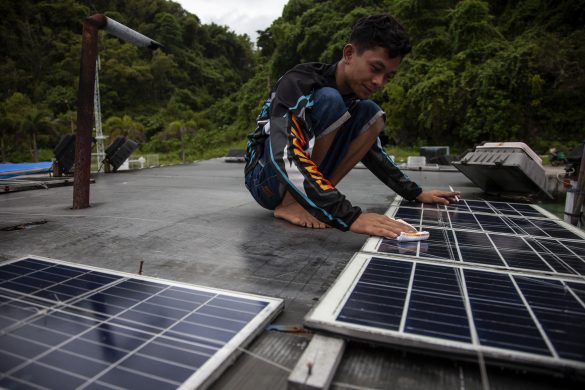(IMF) An International Monetary Fund (IMF) team led by Mr. Shanaka J. Peiris visited Myanmar from November 6th −17th, 2017, to conduct discussions for the 2017 Article IV consultations. At the conclusion of this visit, Mr. Peiris issued the following statement:
“The economy stabilized in 2016/17. The new government saw a challenging first year with lower-than-expected growth of 5.9 percent in 2016/17 mainly due to weak agriculture production and exports, and temporary suspension of some construction projects in Yangon. The fiscal consolidation to about 3 percent of GDP deficit in 2016/17, from the election year deficit of about 4 ½ percent of GDP, helped to reduce central bank financing of the deficit and imbalances. Inflation moderated to 6.8 percent, and the current account deficit fell to about 3.9 percent of GDP in 2016/17 from 5.1 percent 2015/16. The current account deficit continues to be mainly financed by FDI, with the real exchange rate and international reserves (at 3.2 months of prospective imports) broadly stable.
“The medium-term macroeconomic outlook remains favorable. Growth is expected to rebound to 6.7 percent in 2017/18 mainly supported by a recovering agriculture sector and exports. Higher fiscal spending anticipated in the second half of 2017/18 due to buoyant tax revenues and the revenue-neutral supplementary budget will also support growth. However, the near-term growth trajectory is moderately weaker than previously expected, reflecting a subdued pick up in domestic investment and uncertainties related to the Rakhine state crisis particularly for tourism. Over the medium term, growth is expected to gradually pick up toward the estimated potential rate of about 7.0 – 7.5 percent, reflecting continued large FDI inflows and an improvement in public investment spending and efficiency. In line with development needs, the current account balance is expected to remain in deficit, given buoyant imports associated with FDI and government expenditure.
“Risks are tilted to the downside. The banking sector needs to adjust to important new prudential regulations after a period of rapid credit growth. The internal conflict and humanitarian crisis in Northern Rakhine state could affect development finance and investor sentiment, although the direct economic impact appears to have been largely localized so far. Additional risks stem mainly from external sources including commodity prices, potentially volatile global financial markets, and exposure to spillovers from China. Flood effects have been moderate this year, but natural disasters remain an ever-present risk. On the upside, implementation of a more detailed strategic reform plan and higher infrastructure investment would raise potential growth.
“Myanmar’s initial phase of economic liberalization led to an impressive growth takeoff and poverty reduction; now a second wave of reforms is needed to sustain the momentum. Reforms should be focused on agriculture, the banking system and gradual interest rate liberalization, infrastructure, trade, natural resource management and the legal framework, including further opening up the economy to joint foreign ventures (amendments to Companies Act). A well-sequenced second wave of reforms and greater public investment efficiency would help the economy further integrate with global value chains and foster inclusion.
“Fiscal policy should be geared toward achieving the Sustainable Development Goals (SDGs) while being anchored on debt sustainability and lowering central bank financing of the deficit. Staff welcomed the rising share of social spending and recent initiative to allocate more spending to address regional disparities, particularly for Rakhine state reconstruction and rehabilitation of refugee returns in that state. Fiscal space for increased spending in these areas and public infrastructure over the medium term can be achieved through a combination of expenditure rebalancing, improved Public Financial Management (PFM) and further revenue mobilization, potentially supplemented with greater use of external concessionary finance. Revenue mobilization should build on the good progress achieved in tax administration, followed by the next phase of modernizing tax laws. A strong focus is also needed on PFM reforms and restructuring of State Economic Enterprises, which have become an increasing burden on the budget, particularly in the electricity and financial sector. State-owned banks should be restructured in line with the financial sector reform process. Electricity tariffs need to be rationalized to reduce the subsidies to the state-owned electricity company while mitigating the impact on the poor.
“A market-determined exchange rate will help cushion the economy from shocks and strengthen monetary transmission. While steps toward a market determined exchange rate and active liquidity management have strengthened the monetary and exchange policy framework, greater exchange rate flexibility and deepening of interbank markets would strengthen policy transmission.
“Myanmar continues to work towards safeguarding financial stability. The banking system is adjusting to the issuance of necessary key prudential regulations to upgrade the regulatory framework towards international standards. Staff advised the authorities to implement the regulations in a way that supports financial stability and deepening. Further progress in financial sector and interest rate liberalization must proceed at a pace commensurate with the central bank’s capacity to regulate and supervise.”
The staff team met with the governor and deputy governors of the Central Bank of Myanmar (CBM), the union minister and the deputy ministers of Ministry of Planning and Finance (MoPF), senior government officials, parliamentary members, private sector representatives, and the financial community. We offer our sincere gratitude to the authorities for their cooperation and hospitality.














